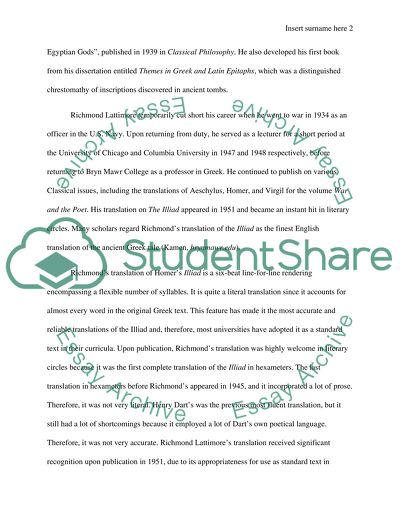Cite this document
(“Editor's Preface on Richmond Lattimore's translation of Homer's Iliad Essay”, n.d.)
Editor's Preface on Richmond Lattimore's translation of Homer's Iliad Essay. Retrieved from https://studentshare.org/literature/1463665-editor-s-preface-on-richmond-lattimore-s
Editor's Preface on Richmond Lattimore's translation of Homer's Iliad Essay. Retrieved from https://studentshare.org/literature/1463665-editor-s-preface-on-richmond-lattimore-s
(Editor's Preface on Richmond Lattimore's Translation of Homer'S Iliad Essay)
Editor's Preface on Richmond Lattimore's Translation of Homer'S Iliad Essay. https://studentshare.org/literature/1463665-editor-s-preface-on-richmond-lattimore-s.
Editor's Preface on Richmond Lattimore's Translation of Homer'S Iliad Essay. https://studentshare.org/literature/1463665-editor-s-preface-on-richmond-lattimore-s.
“Editor's Preface on Richmond Lattimore's Translation of Homer'S Iliad Essay”, n.d. https://studentshare.org/literature/1463665-editor-s-preface-on-richmond-lattimore-s.


